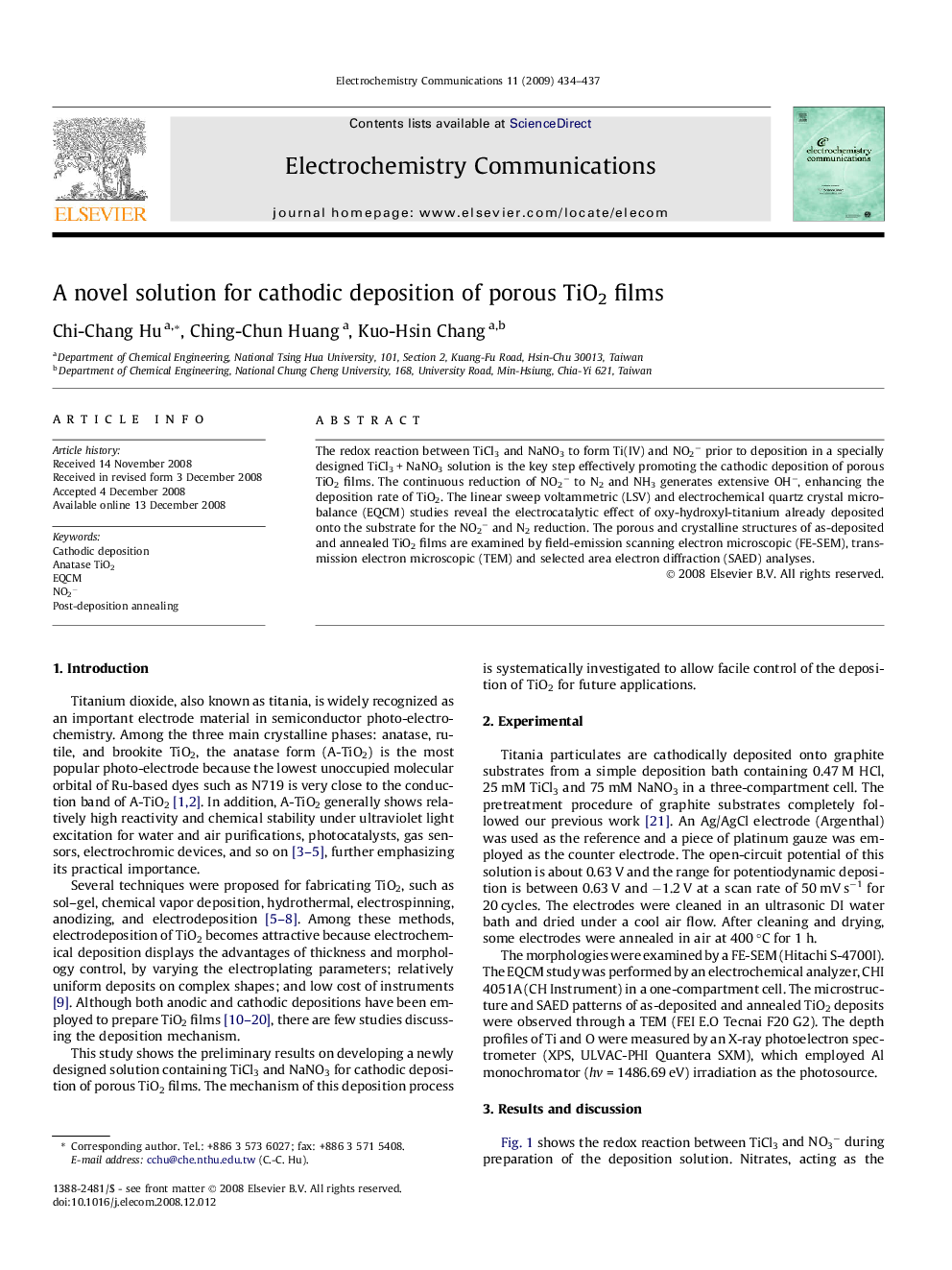| Article ID | Journal | Published Year | Pages | File Type |
|---|---|---|---|---|
| 181579 | Electrochemistry Communications | 2009 | 4 Pages |
The redox reaction between TiCl3 and NaNO3 to form Ti(IV) and NO2− prior to deposition in a specially designed TiCl3 + NaNO3 solution is the key step effectively promoting the cathodic deposition of porous TiO2 films. The continuous reduction of NO2− to N2 and NH3 generates extensive OH−, enhancing the deposition rate of TiO2. The linear sweep voltammetric (LSV) and electrochemical quartz crystal microbalance (EQCM) studies reveal the electrocatalytic effect of oxy-hydroxyl-titanium already deposited onto the substrate for the NO2− and N2 reduction. The porous and crystalline structures of as-deposited and annealed TiO2 films are examined by field-emission scanning electron microscopic (FE-SEM), transmission electron microscopic (TEM) and selected area electron diffraction (SAED) analyses.
